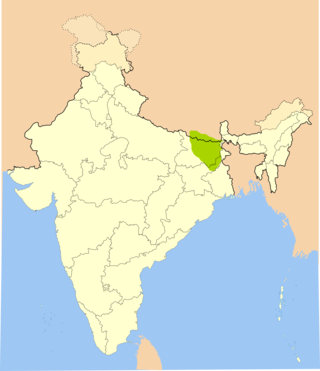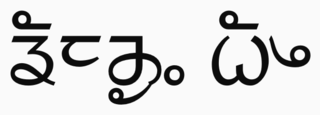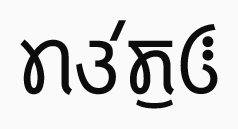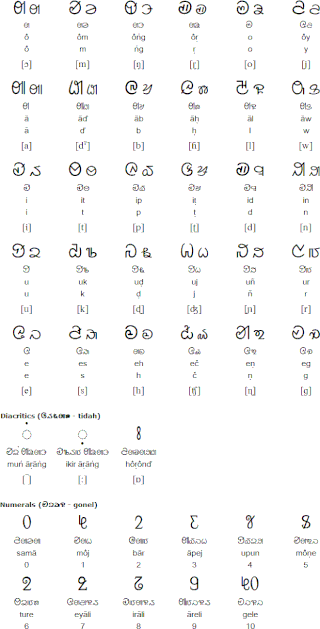
Devanagari is an Indic script used in the Indian subcontinent. Also simply called Nāgari, it is a left-to-right abugida, based on the ancient Brāhmi script. It is one of the official scripts of the Republic of India and Nepal. It was developed and in regular use by the 8th century CE and achieved its modern form by 1000 CE. The Devanāgari script, composed of 48 primary characters, including 14 vowels and 34 consonants, is the fourth most widely adopted writing system in the world, being used for over 120 languages.

Maithili is an Indo-Aryan language spoken in parts of India and Nepal. It is native to the Mithila region, which encompasses parts of the eastern Indian states of Bihar and Jharkhand as well as the Nepal's Koshi and Madhesh Provinces. It is one of the 22 scheduled languages of India. It is the second most commonly spoken language of Nepal. It is also one of the fourteen provincial official languages of Nepal.
The International Alphabet of Sanskrit Transliteration (IAST) is a transliteration scheme that allows the lossless romanisation of Indic scripts as employed by Sanskrit and related Indic languages. It is based on a scheme that emerged during the 19th century from suggestions by Charles Trevelyan, William Jones, Monier Monier-Williams and other scholars, and formalised by the Transliteration Committee of the Geneva Oriental Congress, in September 1894. IAST makes it possible for the reader to read the Indic text unambiguously, exactly as if it were in the original Indic script. It is this faithfulness to the original scripts that accounts for its continuing popularity amongst scholars.

Newar is a Sino-Tibetan language spoken by the Newar people, the indigenous inhabitants of Nepal Mandala, which consists of the Kathmandu Valley and surrounding regions in Nepal. The language is known officially in Nepal as Nepal Bhasa, a name that has been historically used for the language. The term "Newari" is also used to refer to the language, although the Indic -i suffix is considered inappropriate by some Newar speakers.

The Northern Indo-Aryan languages, also known as Pahāṛi languages, are a proposed group of Indo-Aryan languages spoken in the lower ranges of the Himalayas, from Nepal in the east, through the Indian states of Jammu and Kashmir, Uttarakhand, Himachal Pradesh and Punjab was coined by G. A. Grierson.

Kumaoni is an Indo-Aryan language spoken by over two million people of the Kumaon region of the state of Uttarakhand in northern India and parts of Doti region in Western Nepal. As per 1961 survey there were 1,030,254 Kumaoni speakers in India. The number of speakers increased to 2.2 million in 2011.

Doti District, part of Sudurpashchim Province, is one of the 77 districts of Nepal. This district, with Silgadhi as its headquarters, covers an area of 2,025 square kilometres (782 sq mi) with a population of 207,066 in 2001 and increasing marginally to 211,746 in 2011.

Limbu is a Sino-Tibetan language spoken by the Limbu people of Nepal and Northeastern India as well as expatriate communities in Bhutan. The Limbu refer to themselves as Yakthung and their language as Yakthungpan. Yakthungpan has four main dialects: Phedape, Chhathare, Tambarkhole and Panthare dialects.
The nuqta, is a diacritic mark that was introduced in Devanagari and some other Indic scripts to represent sounds not present in the original scripts. It takes the form of a dot placed below a character. This idea is inspired from the Arabic script; for example, there are some letters in Urdu that share the same basic shape but differ in the placement of dots(s) or nuqta(s) in the Perso-Arabic script: the letter ع ayn, with the addition of a nuqta on top, becomes the letter غ g͟hayn.

The Tirhuta or Maithili script was the primary historical script for the Maithili language, as well as one of the historical scripts for Sanskrit. It is believed to have originated in the 13th century CE. It is very similar to Bengali–Assamese script, with most consonants being effectively identical in appearance. For the most part, writing in Maithili has switched to the Devanagari script, which is used to write neighbouring Central Indic languages to the west and north such as Hindi and Nepali, and the number of people with a working knowledge of Tirhuta has dropped considerably in recent years.

Languages of Nepal, referred to as Nepalese languages in the country's constitution, are the languages having at least an ancient history or origin inside the sovereign territory of Nepal, spoken by Nepalis.

The Tharu or Tharuhat languages are any of the Indo-Aryan languages spoken by the Tharu people of the Terai region in Nepal, and neighboring regions of Uttarakhand, Uttar Pradesh and Bihar in India.

Mahasu Pahari is a Western Pahari is a dialect of Himachali language spoken in Himachal Pradesh. It is also known as Mahasui or Mahasuvi. The speaking population is about 1,000,000 (2001). It is more commonly spoken in the Himachal Pradesh, Shimla (Simla) and Solan districts. It is to be known that Shimla and Solan were parts of the old Mahasu district. Himachal Pradesh State on 1 September 1972 reorganised the districts dissolving Mahasu district. The Solan district was carved out of Solan and Arki tehsils of the then Mahasu district and tehsils of Kandaghat and Nalagarh of the then Shimla District of Punjab.

Kagate or Syuba is a language from the subgroup of Tibetic languages spoken by the Kagate people primarily in the Ramechhap district of Nepal.

Jumli or Jumli Khas is an Indo-Aryan language of Nepal closely related to Nepali. It is primarily spoken in Jumla district and surroundings district in the Karnali Province of Nepal. The language is occasionally referred to as a dialect of Nepali; however, the Government of Nepal considers Jumli as a different language. The numbers of native speakers estimated 40,000. The Khas language is known as the parent language of Nepali language.

Nepali is an Indo-Aryan language native to the Himalayas region of South Asia. It is the official, and most widely spoken, language of Nepal, where it also serves as a lingua franca. Nepali has official status in the Indian state of Sikkim and in the Gorkhaland Territorial Administration of West Bengal. It is spoken by about a quarter of Bhutan's population. Nepali also has a significant number of speakers in the states of Arunachal Pradesh, Assam, Himachal Pradesh, Manipur, Meghalaya, Mizoram and Uttarakhand. In Myanmar it is spoken by the Burmese Gurkhas. The Nepali diaspora in the Middle East, Brunei, Australia and worldwide also use the language. Nepali is spoken by approximately 19 million native speakers and another 14 million as a second language.

Chambeali is an Indo-Aryan languages, spoken in the Chamba district of Himachal Pradesh.

Pangwali is an Indo-Aryan languages. It is spoken in the Pangi Tehsil of Chamba district, and is threatened to go extinct. Pangwali is natively written in the Takri script, but Devanagari is used as well. It is very similar to the Padderi language of Padder, J&K.

The Ol Onal, also known as also known as Bhumij Lipi or Bhumij Onal, is an alphabetic writing system for the Bhumij language. Ol Onal script was created between 1981 and 1992 by Ol Guru Mahendra Nath Sardar. Ol Onal script is used to write the Bhumij language in some parts of West Bengal, Jharkhand, Orissa, and Assam.
The Constitution of Nepal recognizes all mother tongues as national languages of Nepal.


















